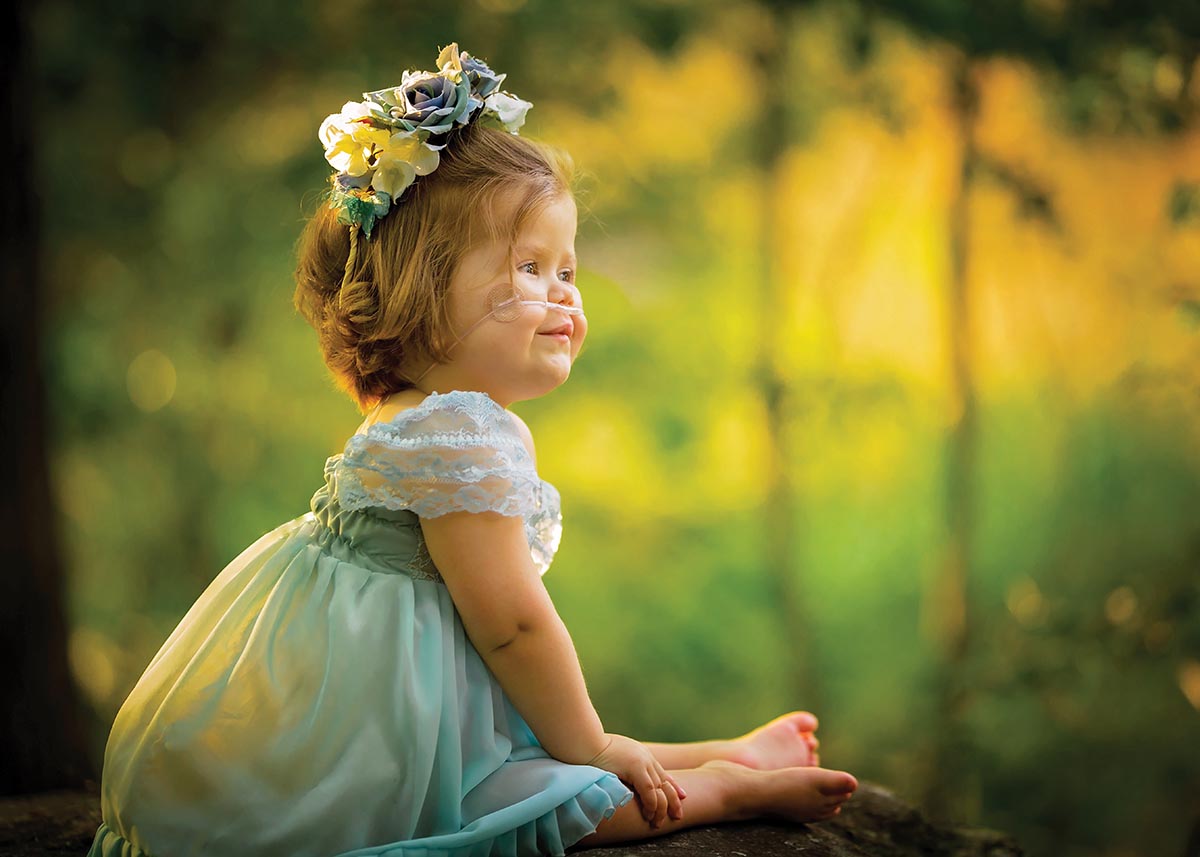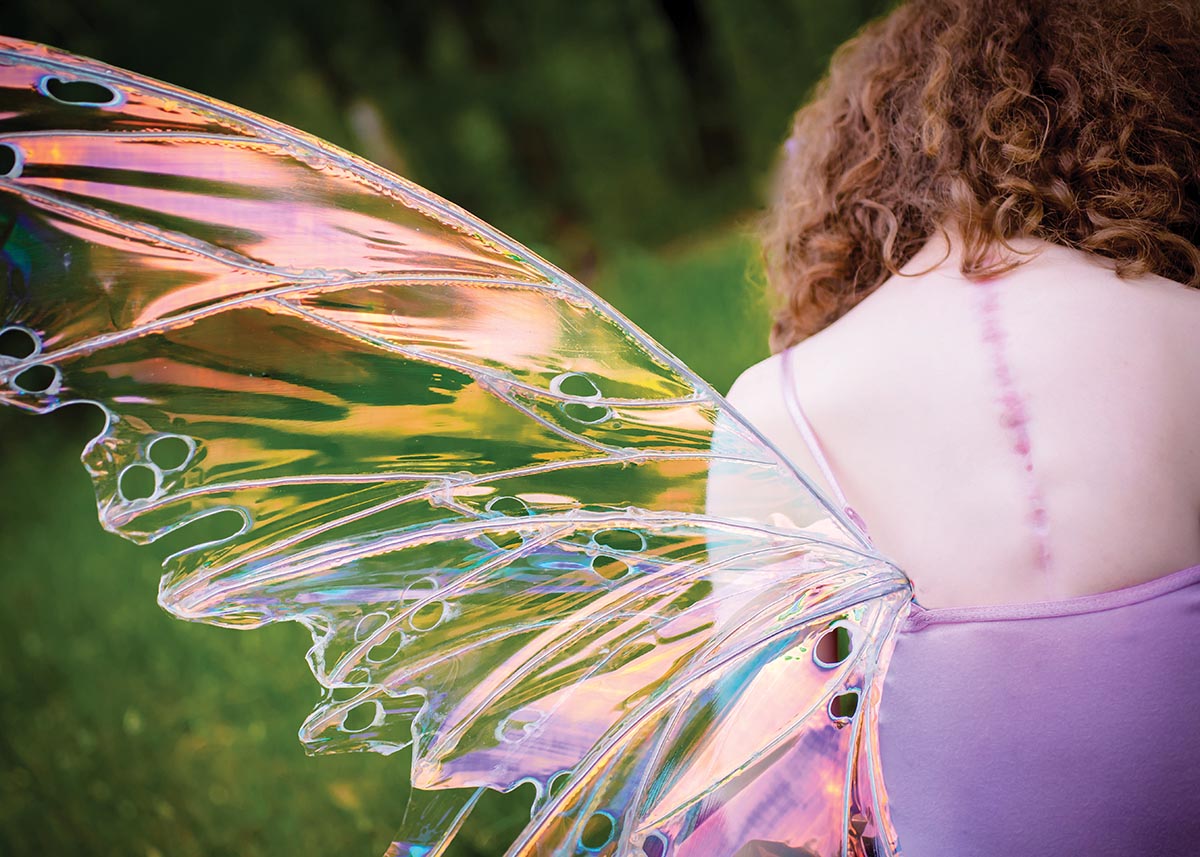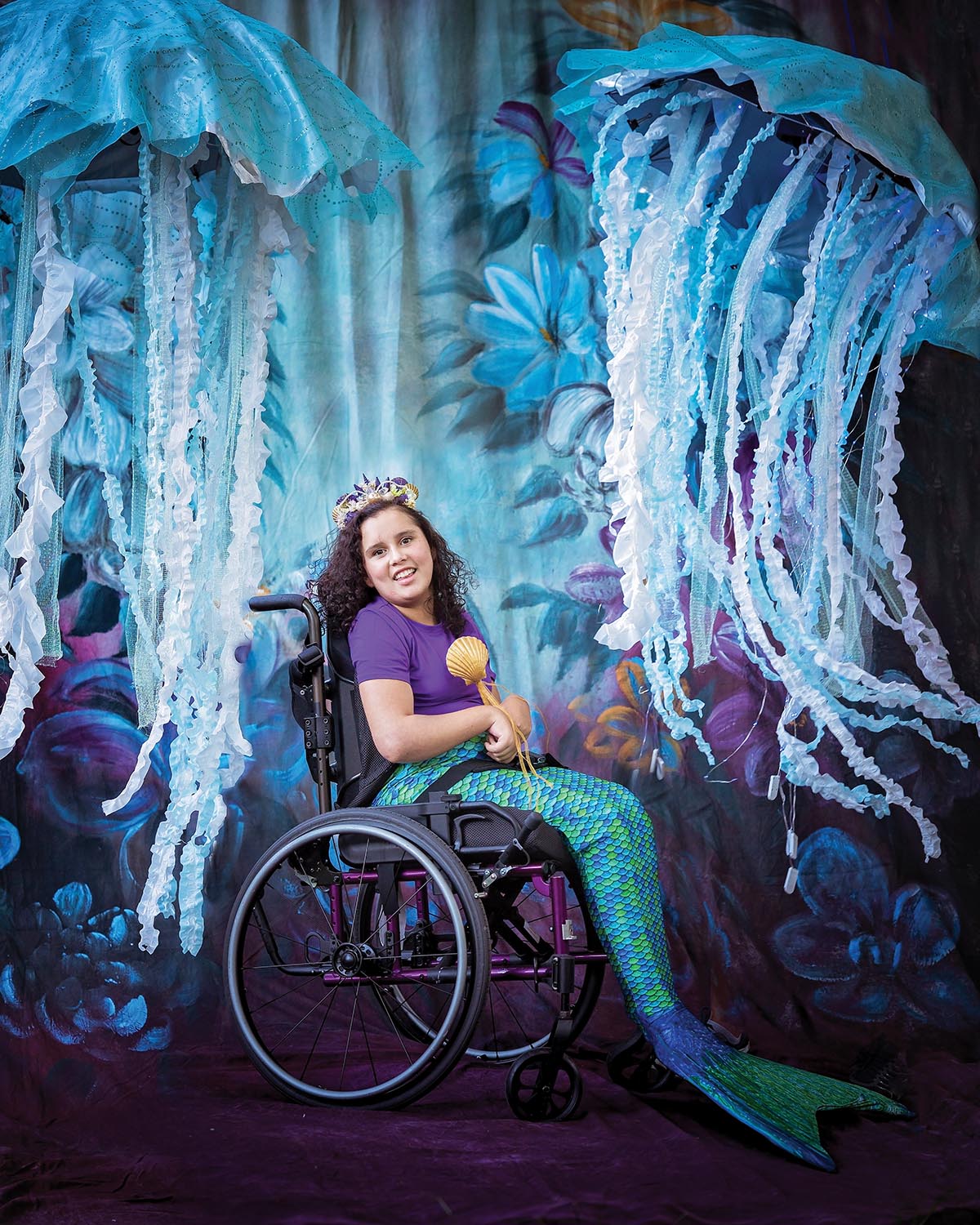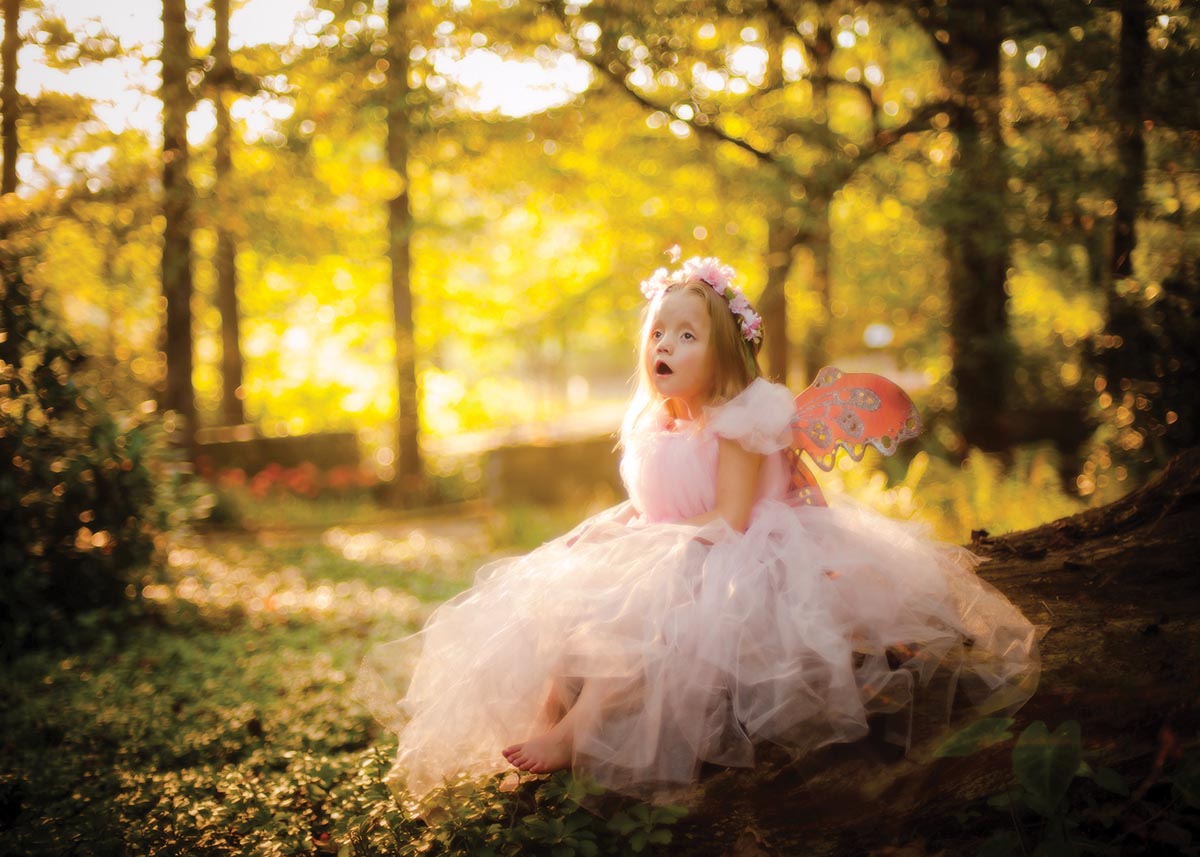When you look at Heather Larkin’s portraits of cherubic newborns, glowing moms-to-be, and sprightly fairies, resilience probably isn’t the first word that comes to mind. But fierce resilience is a defining trait of Larkin’s, an underlying strength that’s allowed her to create her magical world of Fairyography. With the help of flower garlands, flowy silks, and delicate wings, Larkin transforms mothers, babies, and children into the ethereal for an afternoon. Where her resilience plays a part is in the work you don’t see—or that you don’t realize you do see.
Based in Athens, Georgia, Larkin has been a photographer for nearly 20 years. Over the past 13, she’s devoted a portion of her sessions to children with medical hardships or disabilities. It’s an area of work that’s near and dear to her heart, harkening back to her pre-photographer days as a preschool teacher. Children with disabilities were a focus of her college degree work, and Larkin found delight and fulfillment in working with children who the world sometimes overlooked, she says.

Later, as a photographer, she found herself missing those interactions deeply and devised a plan to merge her background with her current work by donating a session to a girl nominated by the local community. She received only one nomination the first year, for a girl with a brain stem tumor.
“I feel so naive looking back,” says Larkin. “But at the time it didn’t cross my mind that she might not get better. I wanted her to feel amazing and give her something to make herself feel better later on, while she was getting chemo and losing her hair.”
Unfortunately, the tumor proved fatal. The girl’s portraits were displayed at her funeral, and Larkin was devastated.
“I was heartbroken, absolutely heartbroken,” says Larkin. “I could see a little bit of myself in this girl, and I so wanted her to live. Not only for herself and her parents, but the world needed what she had to offer, and she didn’t get a chance.”

At the funeral, the girl’s parents told Larkin that she would never know how much those portraits meant to them—a tangible remembrance to hold onto when they couldn’t hold their daughter. Heart-sick, Larkin didn’t think she could handle another session like that. But time brought fresh hope. She decided to try again a couple of years later, thinking the odds were in her favor for a happier ending.
“I thought it would get me back on the horse, so to speak,” says Larkin.
This time, she selected a girl with a heart condition.
“We did a beautiful session with her sisters, and she looked like this perfect little pixie with this tiny nose and big blue eyes, like she was sculpted out of pure magic,” says Larkin. Five months after the session, the child had a heart attack and died. Larkin found herself at another funeral hearing from another set of parents about the impact of her portraits.
“I was wrecked again,” she says of the girl’s death.
Here’s where Larkin’s strength took hold and changed the narrative. A year after that second funeral, she had a realization. “I thought, what if I do this again and I meet all kinds of kids, and instead of picking just one, I pick them all,” says Larkin. “I can make them all feel amazing.”
For a third time, Larkin called for recommendations of girls who needed a pick-me-up. She received nominations for girls with cancer, heart defects, early onset arthritis, developmental disabilities, the full gamut of children who needed to feel good about themselves and not set apart from their peers. She designed a once-a-year program to provide a free session to everyone who was nominated during the August application window. If the children had the interest and capacity to accept, she provided a session. Some kids were too sick to make it or weren’t interested in participating, but for the ones who were willing and able, a session was available. Now, Larkin typically takes on about 10 to 12 of these sessions each year in addition to her client work in maternity, newborn, and child portraiture. The experience has been rewarding.
“I have met girls who are so much more than their diagnosis,” says Larkin. “I feel so privileged to see these girls and share them with everyone else.”

The work is uplifting for Larkin, even with the inevitable losses that come with it. But she takes comfort in knowing that her work has made an important impact on the families left behind. In many cases, she understands the sad ending her client will face. One child, for example has Leigh syndrome, a mitochondrial disease that prevents the body from turning sugar into energy. People with this disease typically don’t live past the age of five, although some live long enough to see their 21st birthday. The client was six at the time.
“She is one of the cutest, sweetest, kindest little girls,” says Larkin. “I cried the entire way home from the session because I know at some point they will lose her. It’s not a maybe.”

But some stories have a happier ending, like the nomination that initially sunk Larkin’s heart to her stomach: a longtime client who’d been diagnosed with a brain tumor. Fortunately, a successful surgery led the girl to a full recovery.
Larkin’s friends tease her about her Pollyanna-like ability to tap into a deep spring of seemingly eternal optimism. Making each client feel special for an afternoon and creating a positive experience for each family is the fairy dust that buoys Larkin’s drive to keep moving forward.
“I get super sad and really angry that the world can be this callous and cruel,” she says. “And I’ll think that I don’t want to do this anymore. But then another year rolls around and I say I’ll do it again because I realize the impact I’m making is helping their lives. The sadness gets to me, but it doesn’t stay.”
Stephanie Boozer is a writer in Charleston, South Carolina.


 View Gallery
View Gallery


